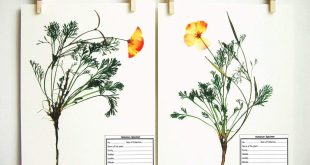The steps in the biosystematic investigation are as follows
- A sampling of taxon and its population and cytological study of the chromosome of many populations within geographical races, species, and genera; differences in chromosome number, morphology, and behavior of meiosis indicated genetic differences.
- Determination of the ability of the different populations to hybridize and study of vigor and fertility of the hybrids.
- The study of homologies of the chromosomes is the hybrids at meiosis. This indicates a degree of genetic relationship.
- Synthesis of the data in the previous 3, along with that of comparative morphology and geographical distributions.
Biosystematics refers to the isolation and indication of a plant population into living biotic units and classifies them up to a specific level for specific purposes.
Biosystematic Categories
Biosystematic categories are different from the normal taxonomic categories. The biosystematic categories are described below
Ecotype
Ecotype is the basic unit of biosystemátics. Ecotype is a population that is different from other populations by morphological and physiological characteristics. An ecotype is capable of forming a fully fertile hybrid by sexual reproduction with another ecotype of the same ecospecies but due to environmental barriers (eg. hills, oceans), genes may not exchange normally.
Different ecotypes of the same ecospecies are differentiated by each other by several genes but they are not differentiated by genetic barriers. They are differentiated only by ecological barriers.
The word biotype is used in the description of biosystemátics. A biotype is formed by plants having the same genotype.
Ecospecies
Ecospecies is a group of plants formed by one or more ecotypes and they are capable of exchanging genes with other ecospecies of the same cenospecies. Cross between two ecospecies of the same genospecies form incompletely sterile progeny but if they are fertile then F2 generation expresses weak characters like less growth, susceptible to diseases etc.
Some taxonomists consider ecospecies as the sub-species or species of classical taxonomy.
Cenospecies
Cenospecies is a group of plants formed by one or more ecospecies and considering their cellular, morphological and experimental information, they are thought to have originated from same evolutionary line. Cross between two cenospecies of same comparium results in the complete sterile progeny.
Some taxonomists consider conospecies as the section on subsection of the genus of classical taxonomy.
Comparism
A comparium is composed of one or more cenospecies. Intercross between two comparium is not possible.
Some taxonomists consider comparium as the genus of Classical taxonomy
Revised by
- Md. Siddiq Hasan on August 12, 2020
 Plantlet The Blogging Platform of Department of Botany, University of Dhaka
Plantlet The Blogging Platform of Department of Botany, University of Dhaka





